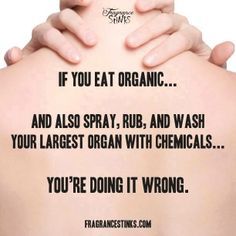
Here’s why…
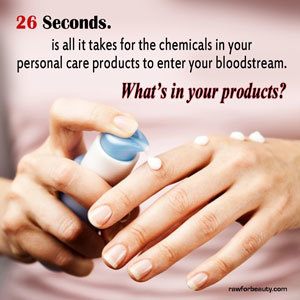
Biochemist Richard Bence has warned that the chemicals found in everyday beauty products could be doing untold damage.
Bence, who has spent three years studying the ingredients in cosmetics and toiletries, said, “There is a growing amount of research questioning the ingredients found in conventional beauty products.
“We really need to start questioning the products we are putting on our skin and not just assume that the chemicals in them are safe.
“We have no idea what these chemicals do when they are mixed together. The effect could be much greater than the sum of the individual parts.”
Not only are the chemicals themselves of concern, but the rate at which these chemicals are applied on the skin is also worrying. While shampoo might be used once every few days, lipstick may be applied every few hours.
New research by the University of California, Berkeley, found that lipsticks can contain as many as nine different metals. If used twice a day, they provided more than 20 per cent of a person’s acceptable daily intake (ADI) for aluminium, cadmium and manganese. Some exceeded the ADI for chromium, a metal that has been linked to stomach tumours.
If applied frequently, several of the products would push those figures over the ADI for aluminium and manganese.
“Finding these metals isn’t the issue; it’s the levels that matter,” Berkeley researcher Katharine Hammond says. “Some of these toxic metals are occurring at levels that could have an effect on long-term health.”
With research showing that the average woman absorbs over 500 different synthetic chemicals into her body every day due to personal care and cosmetic products, and over 2kg of chemicals through her skin every year, we can see why it’s so important to be informed of the dangers of these chemicals.
If you want to protect yourself from chemical overload, you can reduce your overall cosmetics usage or switch to natural or organic products.
The Meat-ting Place supermarket at McDowall has an excellent range of natural skin care products. Click here to see our range.
You should also be aware of the ingredients to look out for on beauty and grooming products.
Below is a list of some of the most hazardous chemicals to avoid in cosmetic and personal care products.
You can also download your “Dirty Dozen” Shopper’s Guide from http://bit.ly/1fLMlTO
HAZARDOUS CHEMICALS TO AVOID IN COSMETIC AND PERSONAL CARE PRODUCTS:
 1. Parabens
1. Parabens
Used in: Makeup, moisturisers, shampoos, cosmetics etc.
Why used?: Parabens are used as a preservative. An estimated 75 to 90 per cent of cosmetics contain parabens.
Why harmful?: Easily penetrates the skin, interferes with hormone function (endocrine disruption), possibly linked to cancer, may lead to increased skin ageing and DNA damage.
Also look out for: Ingredients with “paraben” in their name (methylparaben, butylparaben, propylparaben, isobutylparaben, ethylparaben).
2. DEA, Cocamide DEA and Lauramide DEA
Used in: Creamy and foaming products such as moisturiser and shampoo.
Why used?: Used to make cosmetics creamy or sudsy. Also acts as a pH adjuster, counteracting the acidity of other ingredients.
Why harmful?: Can react to form cancer-causing nitrosamines. Cause mild to moderate skin and eye irritation. High doses cause liver cancers and precancerous changes in skin and thyroid.
Also look out for: Related chemicals MEA and TEA
 3. Dibutyl Phthalate or DBP
3. Dibutyl Phthalate or DBP
Used in: Nail products and some hair sprays.
Why used?: Used mainly as a solvent for dyes and as a plasticizer that prevents nail polishes from becoming brittle.
Why harmful?: Toxic to reproduction and may interfere with hormone function. Can enhance the capacity of other chemicals to cause genetic mutations. Causes developmental defects.
Also look out for: Diethyl phthalate (DEP)
4. BHA (butylated hydroxyanisole) and BHT (butylated hydroxytoluene)
Used in: Moisturiser, cosmetics, etc.
Why used?: Used as preservatives in lipsticks and moisturisers, among other cosmetics.
Why harmful?: Can cause cancer and interfere with hormone function. Can induce allergic reactions in the skin.
 5. Coal Tar Dyes
5. Coal Tar Dyes
Used in: Hair dyes, body washes etc
Why used?: Coal tar-derived colours are used extensively in cosmetics. P-phenylenediamine is a particular coal tar dye used in many hair dyes.
Why harmful?: Potential to cause cancer and can be contaminated with heavy metals toxic to the brain.
6. Formaldehyde-Releasing Preservatives
Used in: Hair products, moisturisers etc.
Why used?: Used as preservatives
Why harmful?: Formaldehyde causes cancer.
Also look out for: DMDM Hydantoin, Diazolidinyl Urea, Imidazolidinyl Urea, Methenamine, or Quarternium-15.
 7. Synthetic Fragrances and Parfum
7. Synthetic Fragrances and Parfum
Used in: Shampoos, body wash, moisturisers, perfumes, colognes, deodorants etc.
Why used?: Used to produce a pleasant scent.
Why harmful?: Mixture of chemicals that can trigger allergies, migraines and asthma. Some linked to cancer and neurotoxicity.
8. PEGs
Used in: Conditioners, moisturisers, deodorants, cosmetics etc.
Why used?: Used as thickeners, solvents, softeners and moisture-carriers. Commonly used as cosmetic cream bases.
Why harmful?: Can be contaminated with 1,4-dioxane, which can cause cancer.
 9. Petrolatum
9. Petrolatum
Used in: Hair products, lip balms and lipsticks, skin care products.
Why used?: Used as a barrier to lock moisture in the skin in a variety of moisturisers and also in hair care products to make your hair shine.
Why harmful?: Can be contaminated with cancer-causing impurities.
10. Mineral Oil (Most harmful when poorly refined)
Used in: Baby oil, body lotions, soap and makeup.
Why used? Serves as a preserving agent and assists in retaining moisture.
Why harmful?: clogs the pores and interferes with the skin’s ability to eliminate toxins, promoting acne and other disorders. Slows down skin function and cell development, resulting in premature ageing. May be contaminated with PAHs (carcinogens).
11. Siloxanes
Used in: Moisturiser, makeup, facial treatments, hair products, etc.
Why used?: Used in cosmetics to soften, smooth, and moisten. They make hair products dry more quickly and deodorant creams slide on more easily.
Why harmful?: Can interfere with hormone function and damage the liver. Possible reproductive toxicant that may impair human fertility. May cause uterine tumours. Harmful to the reproductive and immune systems.
Also look out for: Cyclomethicone and ingredients ending in “siloxane” (e.g. cyclotetrasiloxane)
 12. Sodium Lauryl Sulfate (SLS) and Sodium Laureth Sulfate (SLES)
12. Sodium Lauryl Sulfate (SLS) and Sodium Laureth Sulfate (SLES)
Used in: Shampoos, cleansers, shower gels, bubble bath (products that foam).
Why used?: Used as a detergent and also to make products bubble and foam.
Why harmful?: SLES can be contaminated with 1,4-dioxane, which may cause cancer. SLS may damage liver. Irritates skin, eyes and respiratory tract. Linked to depression and diarrhoea.
 13. Triclosan
13. Triclosan
Used in: “Anti-bacterial” products such as toothpaste, soaps, hand sanitisers.
Why used?: Used mainly in antiperspirants/deodorants, cleansers, and hand sanitisers as a preservative and an anti-bacterial agent.
Why harmful?: May interfere with hormone function.
14. Chemical Sunscreens (with Retinyl Palmitate, Oxybenzone and Octyl Methoxycinnamate)
Why harmful?: When many of the chemicals used in popular sunscreens are exposed to sunlight, reactions occur between the sunscreen’s active and inactive ingredients and the epidermis. Toxic reactions include inflammation, dermalogical effects, allergic reactions and photogenotoxic (DNA altering) effects. Chemical sunscreens have ingredients that actually promote cancer.
 15. Aluminium
15. Aluminium
Used in: Deodorant (mostly antiperspirant)
Why used?: Aluminium-based compounds form a temporary plug within the sweat duct that stops the flow of sweat to the skin’s surface.
Why harmful?: It is often linked to Alzheimer’s and brain disorders and is a possible risk factor in breast cancer. It is a neurotoxin that also binds and sticks to our red and white blood cells and hormones that can lead to microvascular strokes which cause many other serious issues.
16. Heavy Metals: Lead, Mercury, Cadmium, Arsenic, Nickel and More
Used in: Cosmetics
Why harmful?: Heavy metals can build up in the body over time and are known to cause varied health problems, which can include: cancer, reproductive and developmental disorders, neurological problems; memory loss; mood swings; nerve, joint and muscle disorders; cardiovascular, skeletal, blood, immune system, kidney and renal problems; headaches; vomiting, nausea, and diarrhoea; lung damage; contact dermatitis; and brittle hair and hair loss. Many are suspected hormone disruptors and respiratory toxins, and for some like lead, there is no known safe blood level.
 17. Talc
17. Talc
Used in: Baby powders, face powders, body powders.
Why used?: Talc is used for its anti-moisture properties.
Why harmful?: Talc is a known carcinogen and is a major cause of ovarian cancer. It can be harmful if inhaled as it can lodge in the lungs, causing respiratory disorders. Since the early 1980s, records show that several thousand infants each year have died or become seriously ill following accidental inhalation of baby powder.

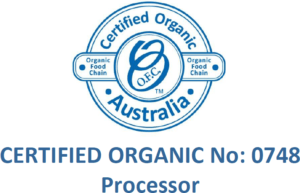

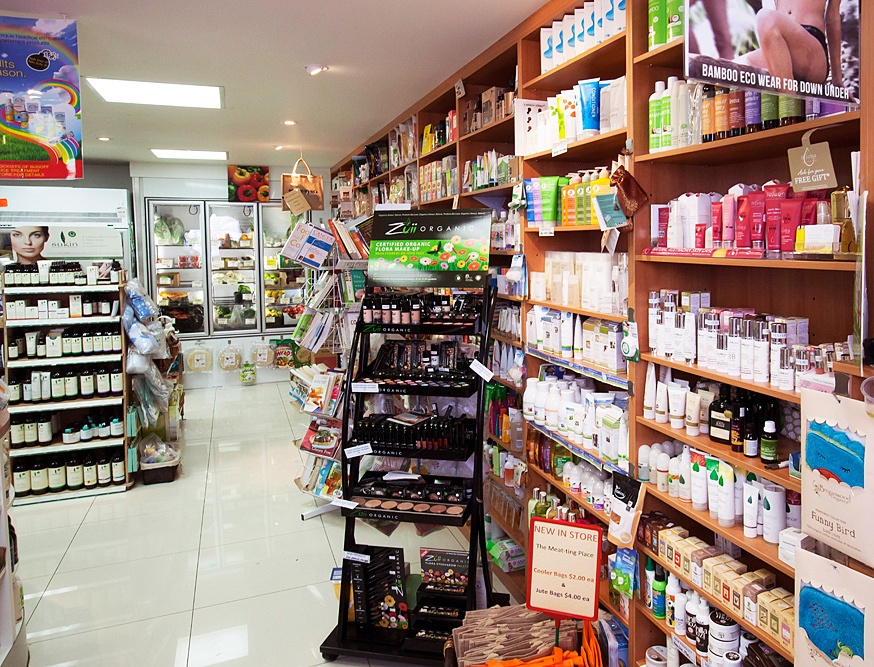
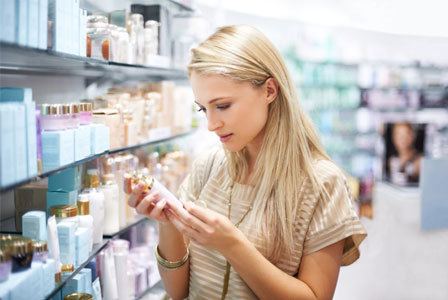 1. Parabens
1. Parabens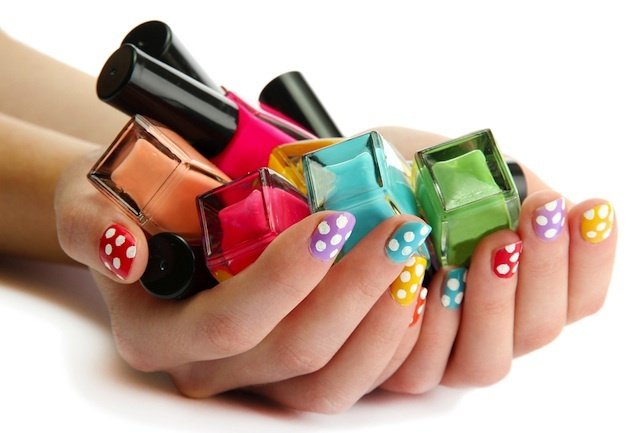 3. Dibutyl Phthalate or DBP
3. Dibutyl Phthalate or DBP 5. Coal Tar Dyes
5. Coal Tar Dyes 7. Synthetic Fragrances and Parfum
7. Synthetic Fragrances and Parfum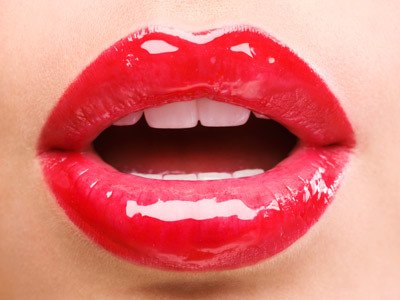 9. Petrolatum
9. Petrolatum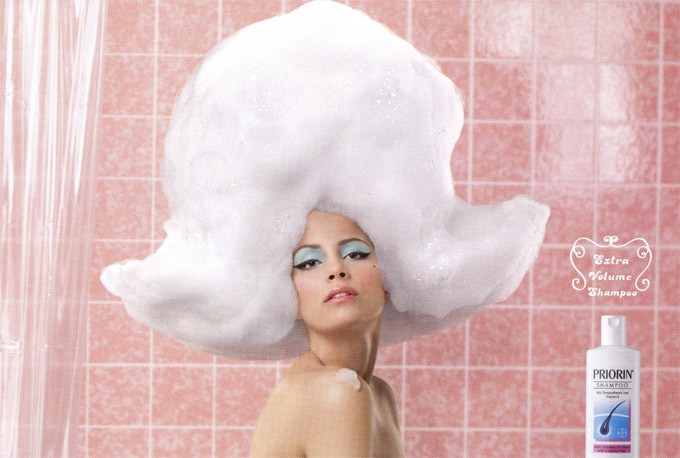 12. Sodium Lauryl Sulfate (SLS) and Sodium Laureth Sulfate (SLES)
12. Sodium Lauryl Sulfate (SLS) and Sodium Laureth Sulfate (SLES)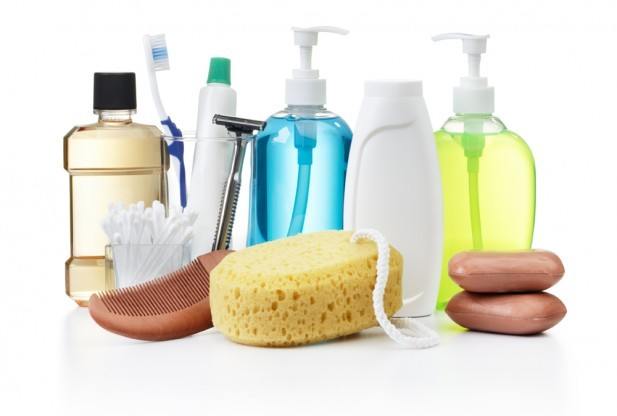 13. Triclosan
13. Triclosan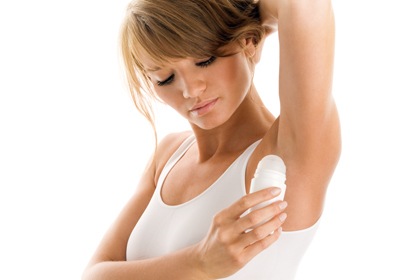 15. Aluminium
15. Aluminium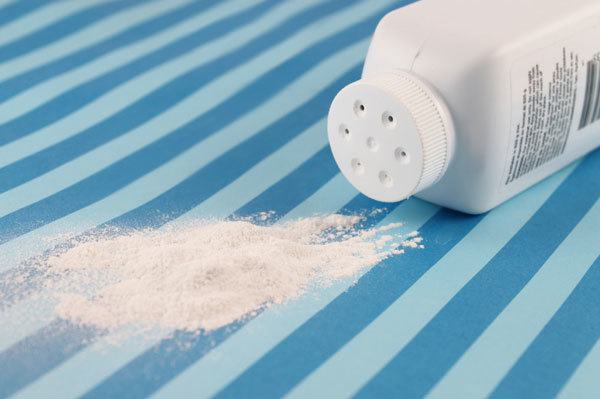 17. Talc
17. Talc